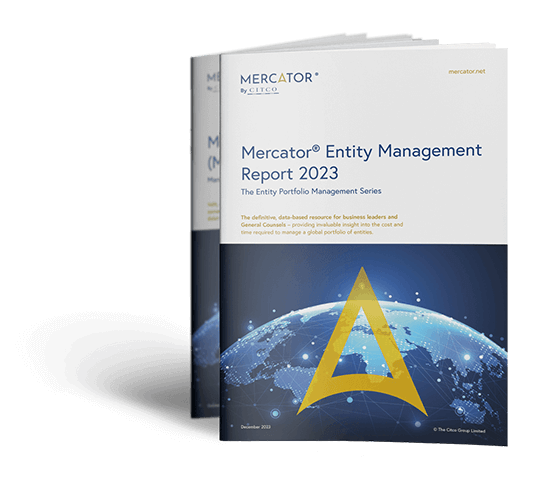The information contained in this document is marketing material and for informational purposes only. The information contained in this document is presented without any warranty or representation as to its accuracy or completeness and all implied representations or warranties of any kind are hereby disclaimed. Recipients of this document, whether clients or otherwise, should not act or refrain from acting on the basis of any information included in this document without seeking appropriate professional advice. The provision of the information contained in this document does not establish any express or implied duty or obligation between Citco and any recipient and neither Citco nor any of its shareholders, members, directors, principals or personnel shall be responsible or liable for results arising from the use or reliance of the information contained in this document including, without limitation, any loss (whether direct, indirect, in contract, tort or otherwise) arising from any decision made or action taken by any party in reliance upon the information contained in this document. © The Citco Group Limited, December 2024.
Asia: Understanding Subsidiary Governance
Global subsidiary governance has transformed in the last decade, with evolving workflows, technological capabilities and a massive increase in regulatory complexity. This has resulted in effective subsidiary governance becoming a serious priority for General Counsels and corporate secretarial teams across the globe.
Nowhere is this more relevant than in Asia. A combination of decentralisation, language barriers and disparate practices, result in the region being one of (if not the most) complex regions in which to manage a portfolio of entities. This makes understanding critical, as failure to meet regulatory compliance can have serious consequences. So it is essential that portfolios are managed efficiently, and regulatory requirements are met.
At Citco GSGS it has, for some time, been our mission to help define the global subsidiary governance industry, and part of that commitment has been to play a leading role in adding detailed thought leadership and insights to support the industry’s transformation. To support development in Asia specifically, we have provided three essential things to consider when planning for regulatory compliance.
Integrated approach to your regulatory compliance plan (RCP)
A pertinent first step in ensuring your business meets all its regulatory requirements is to build an integrated approach to your regulatory compliance plan (RCP). Teams need to bring together disparate stakeholders within the business to make sure that compliance is assured right across the board. An effective process emphasises the importance of getting the fundamentals of integration in place as quickly as possible to help minimise disruptions and achieve synergies. Operational efficiency eliminates duplicative effort and minimises the cost of running the compliance function. These include simplifying processes, strengthening performance management, budgeting and forecasting capabilities, standardising company policies, optimising systems, and data management. Integration success is critically dependent on an effective compliance management to deliver business insight, help ensure compliance and controls, and create operational efficiencies for capturing deal value across the organisation.
A common goal and shared sense of purpose
As a result, the reporting activities become a significant part of Finance and Legal departments’ sphere of responsibilities. As they are coming from different angles to compliance, usually with their own regulatory agenda and different reporting cycles, misbalanced cycles become more challenging in terms of compliance management once the processes are interrelated and dependent on the deliverables from different departments. When combining several processes, you first need to agree on a shared purpose, set common goals, and learn how to work as one to achieve results. None of this is possible without ensuring that people who comprise the separate departments can understand one another and speak the same (technical, operational) language.
Technology is there to be leveraged
Central to our own focus in entity portfolio management on behalf of our own clients is embracing innovative technologies which are helping us to meet increasing regulatory complexity head on. While disclosure rules and audit standards still dictate strict and relatively uniform financial reporting requirements, expectations for big-picture reporting have become more complex and open-ended. Therefore, Citco GSGS has developed a tool – RCP to integrate Legal and Finance departments’ efforts to comply with the regulatory requirements. The RCP serves as a tool for compliance managers to ensure collaboration and effective communication within the organisation. It makes available and easily accessible information such as: regulatory requirements with deadlines and extension possibilities: requirements for preparation, execution and approval of Financial Statements; for preparation of Management / Business Reports, for audits, for disclosure of non-financial / “Sustainability” (ESG practices), and schedules for re-election of officers and auditors.
It is fair to argue that 2020 was one of the most challenging years we have collectively faced from a subsidiary governance perspective in Asia. With teams across the globe forced to relocate to remote working, making the task of ensuring regulatory compliance that much harder. With the vaccination drive gathering pace, a potential return to relative normality should ease pressure on General Counsels and corporate secretarial teams, but the rising tide of complexity shows no signs of subsiding. Whatever the rest of 2021 holds in store, we look forward to global subsidiary governance becoming an increasingly important priority for governance professionals in Asia.

